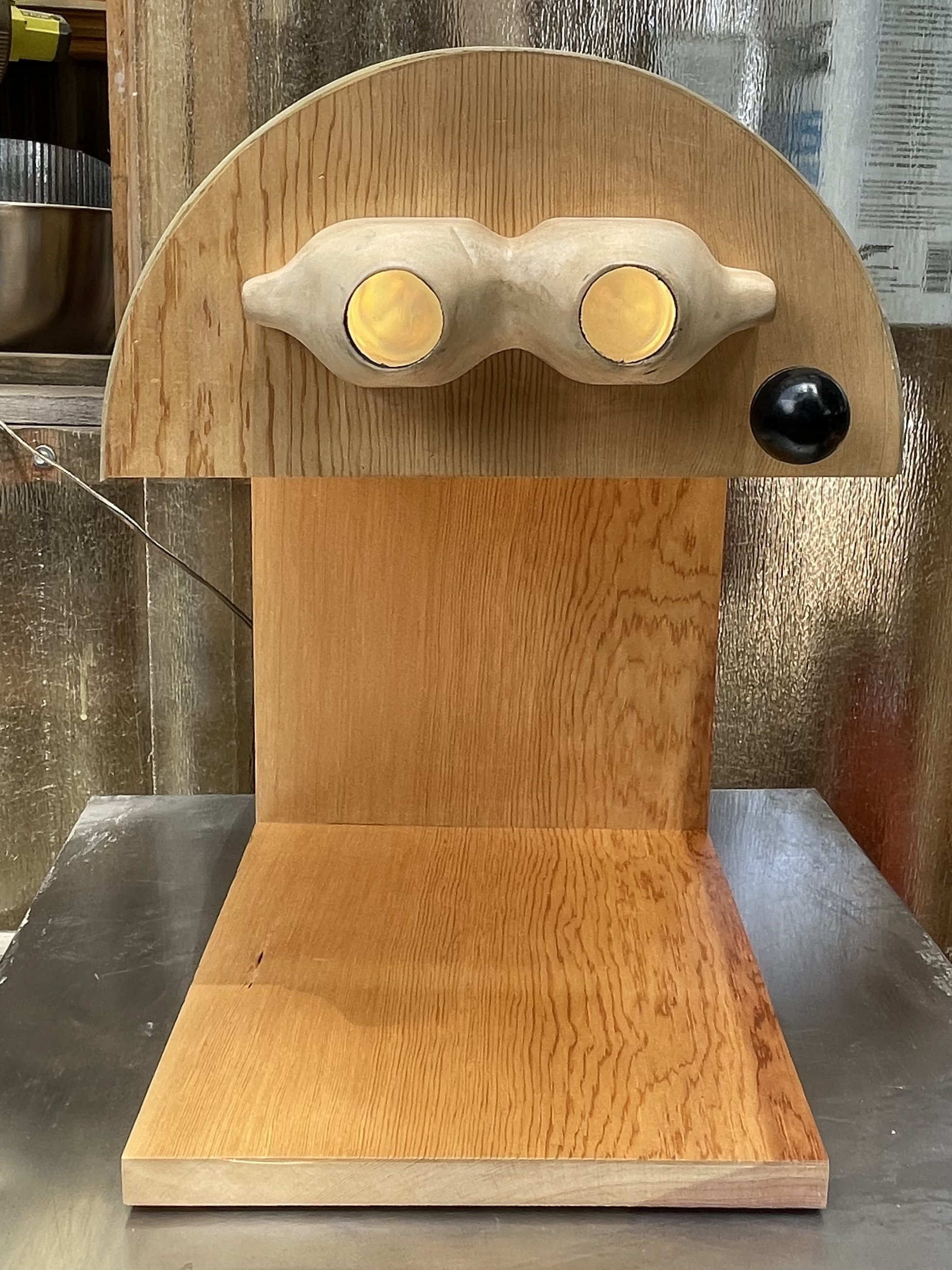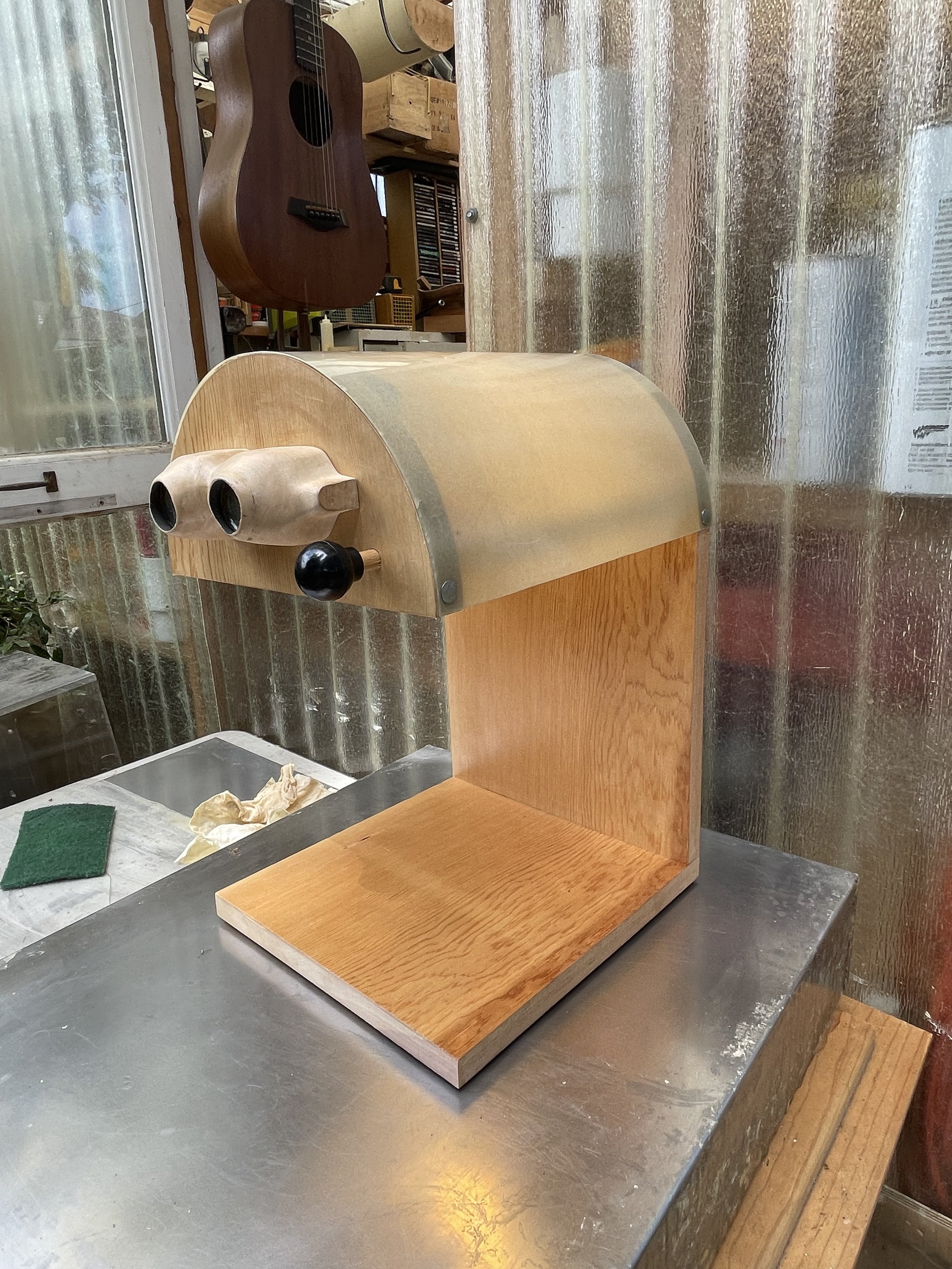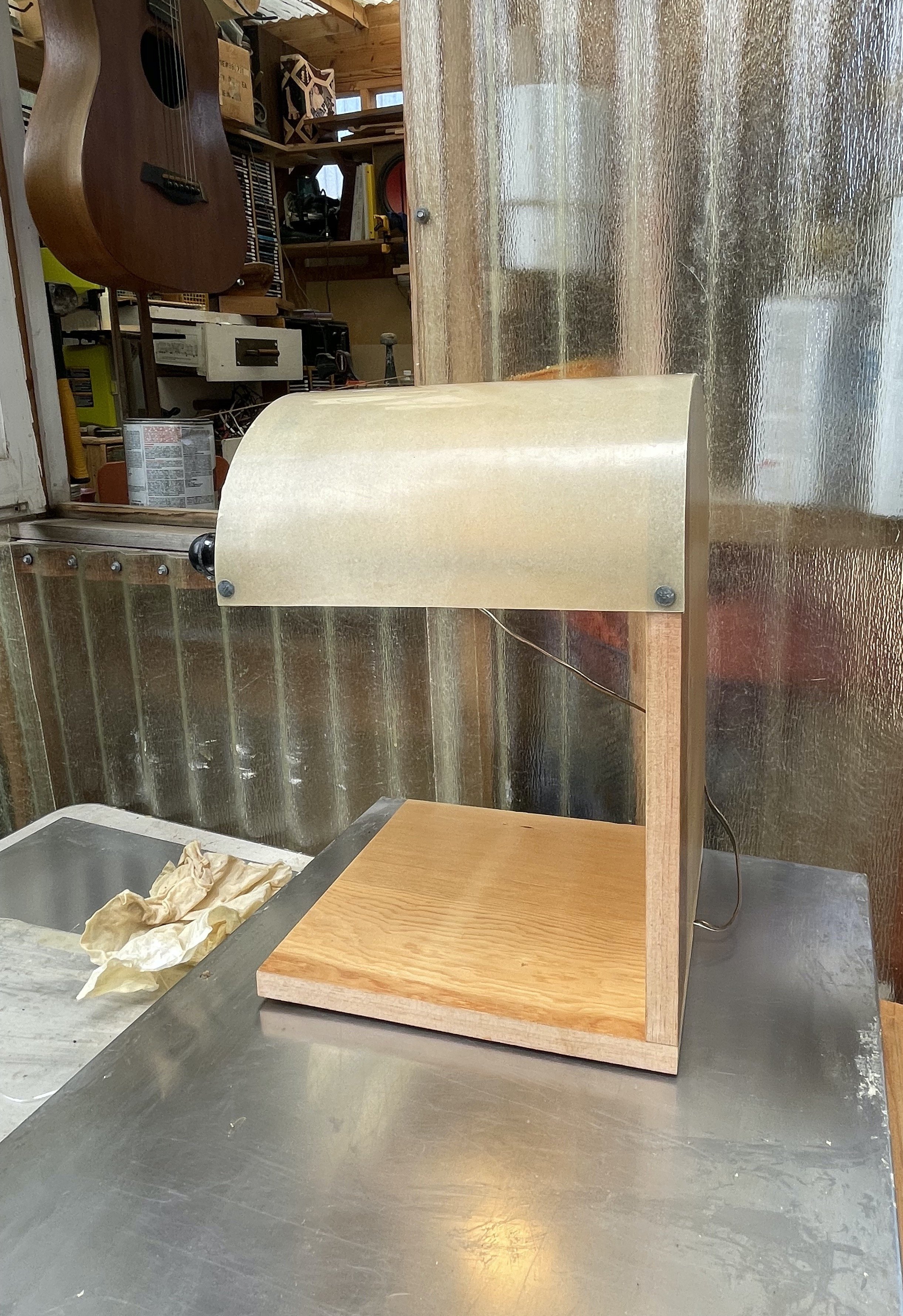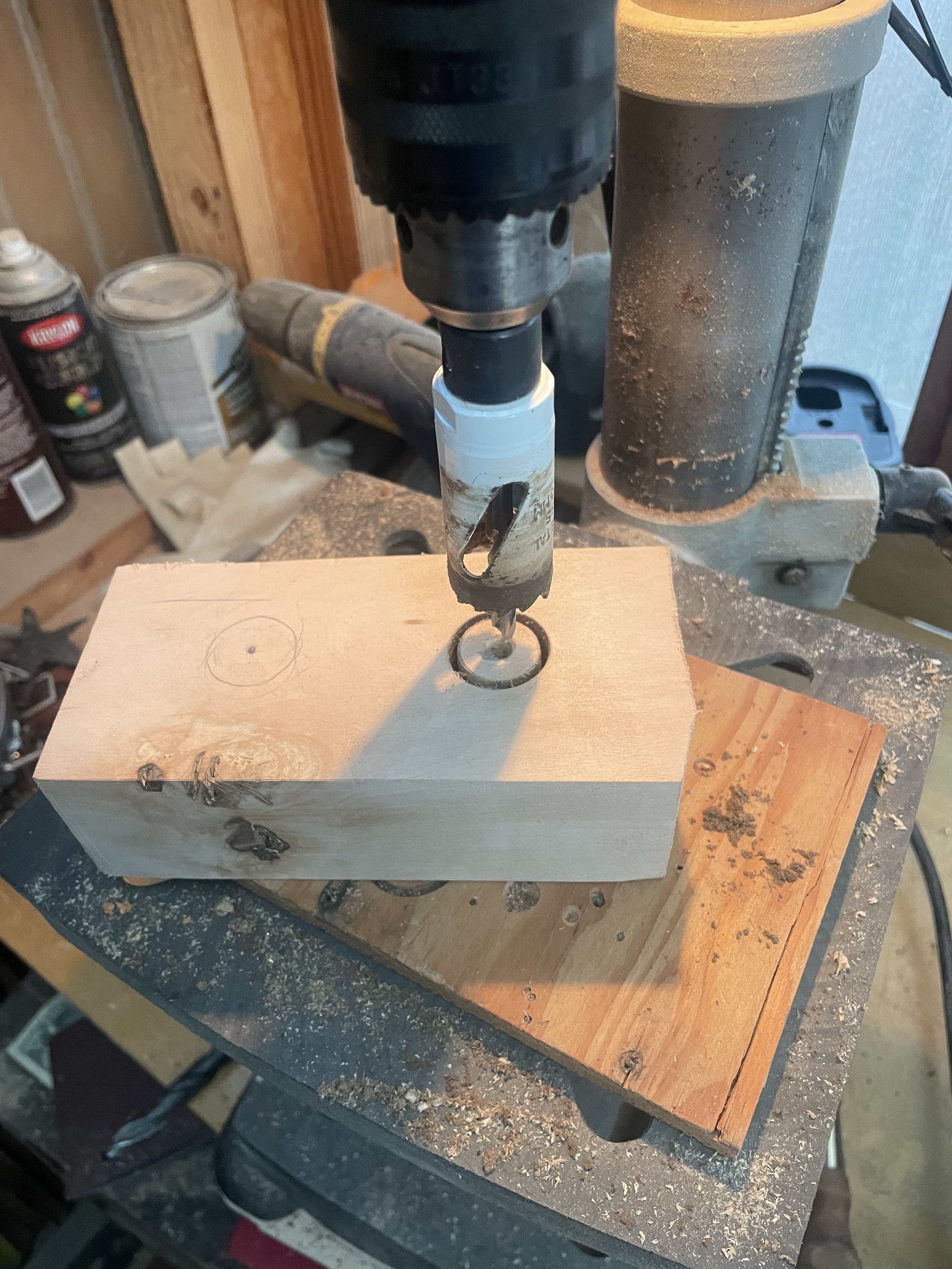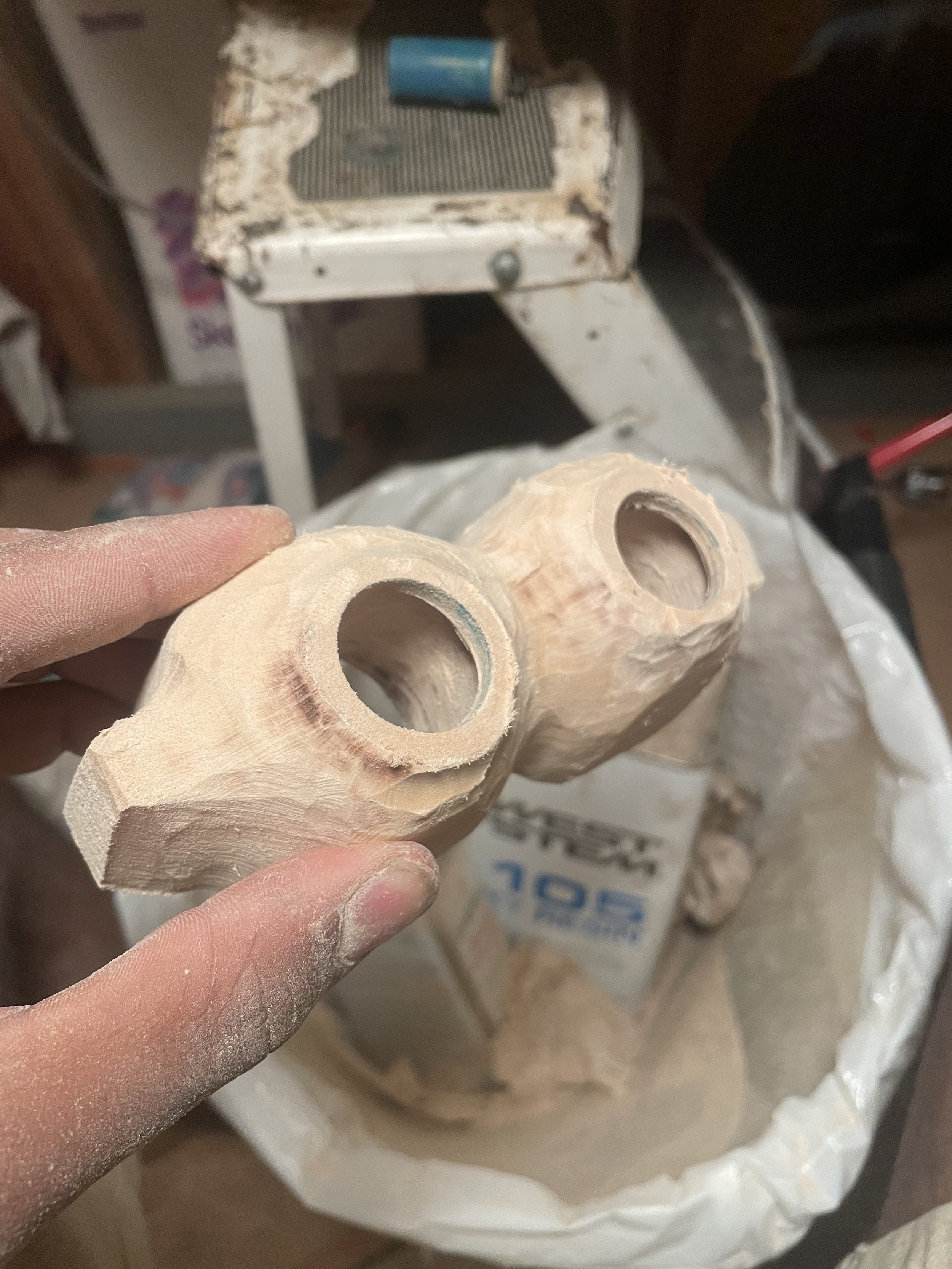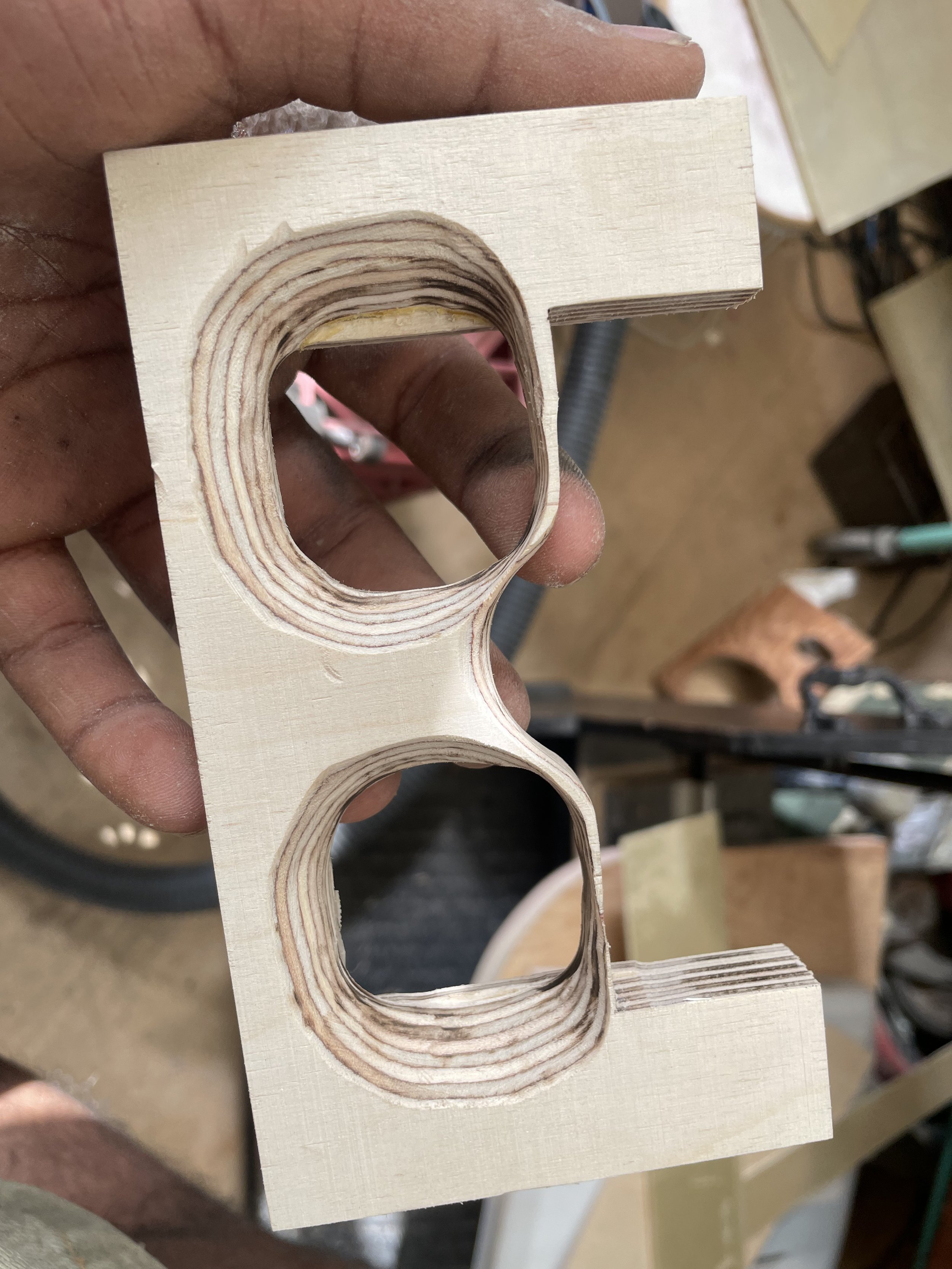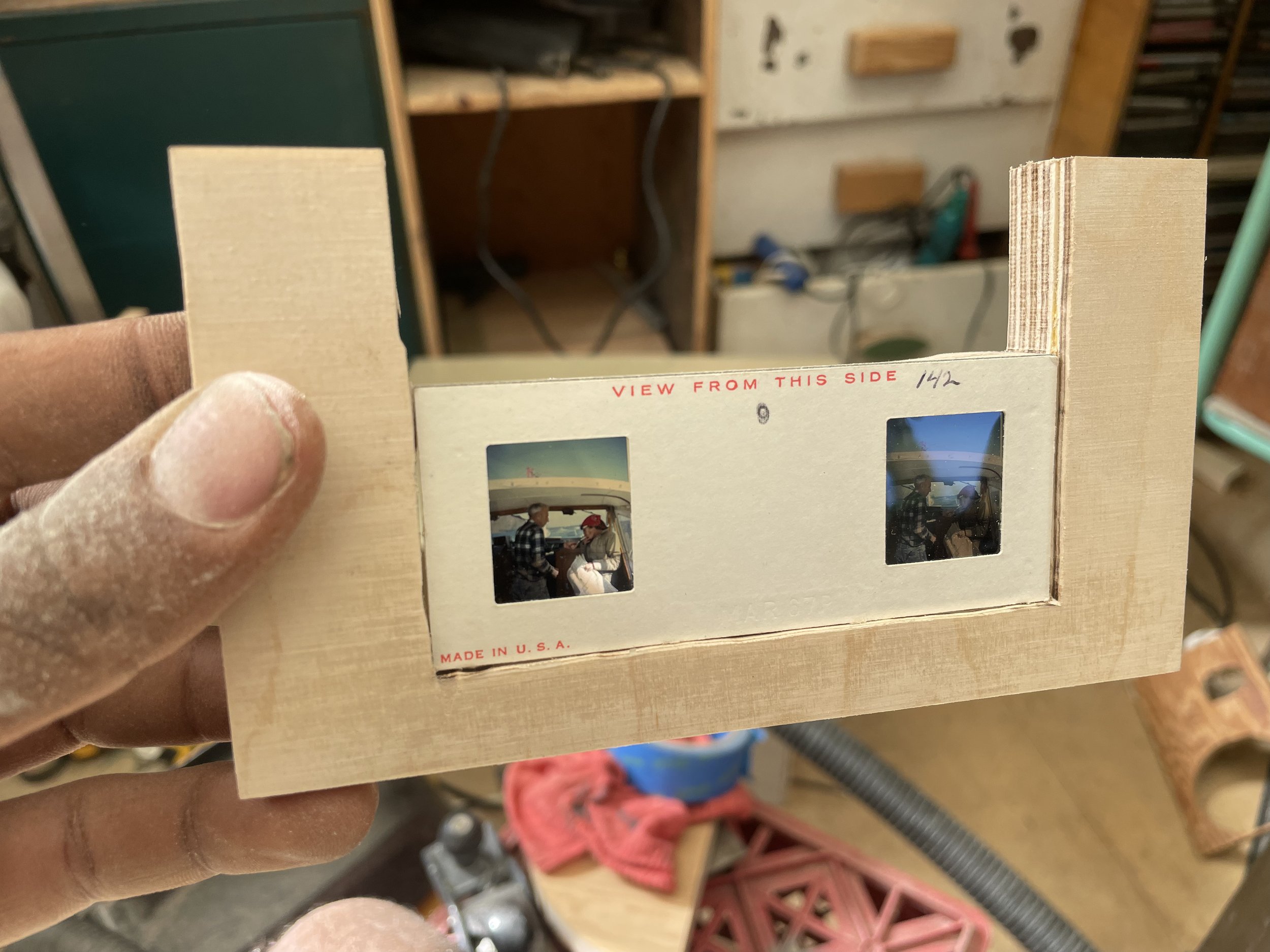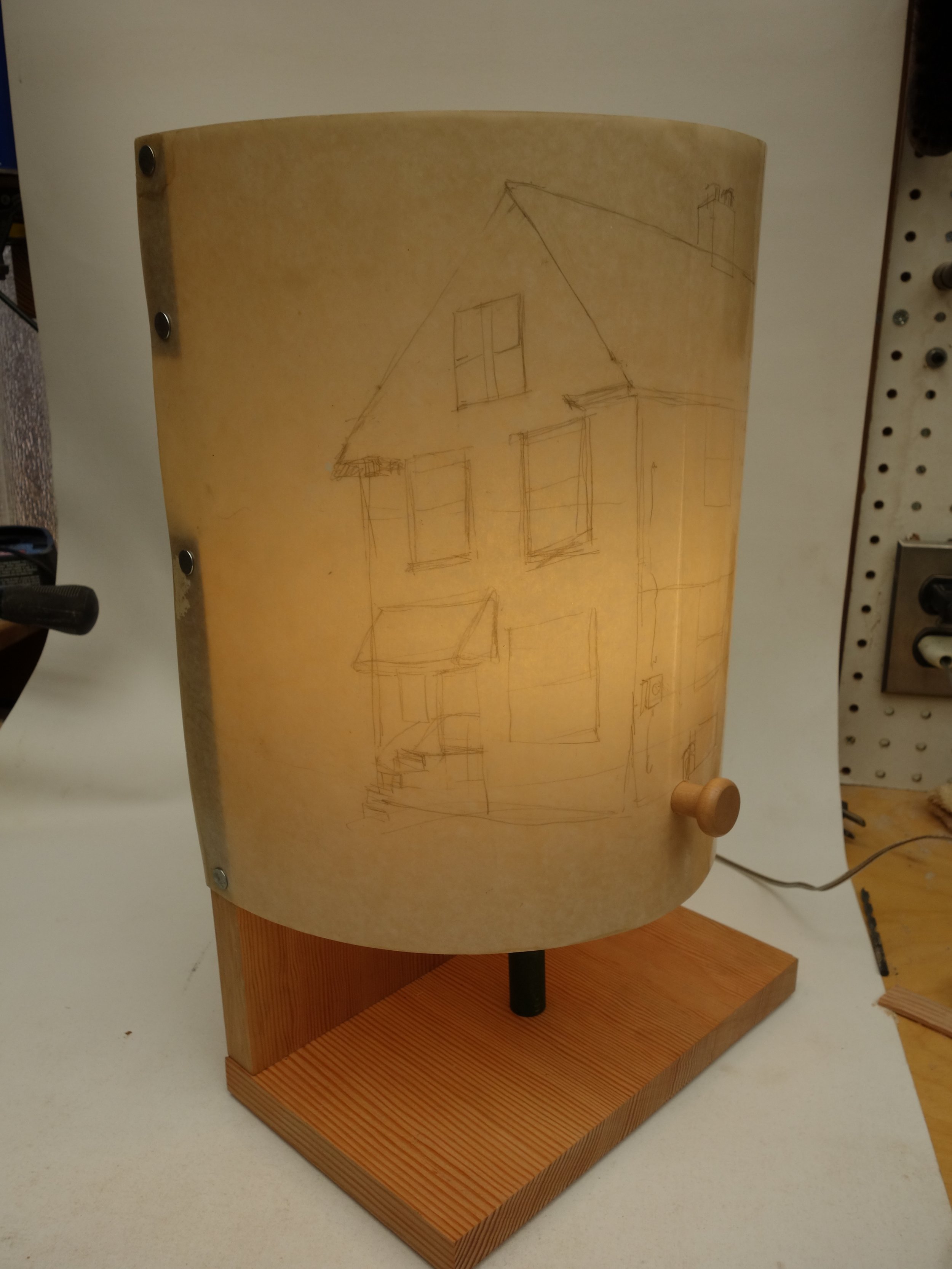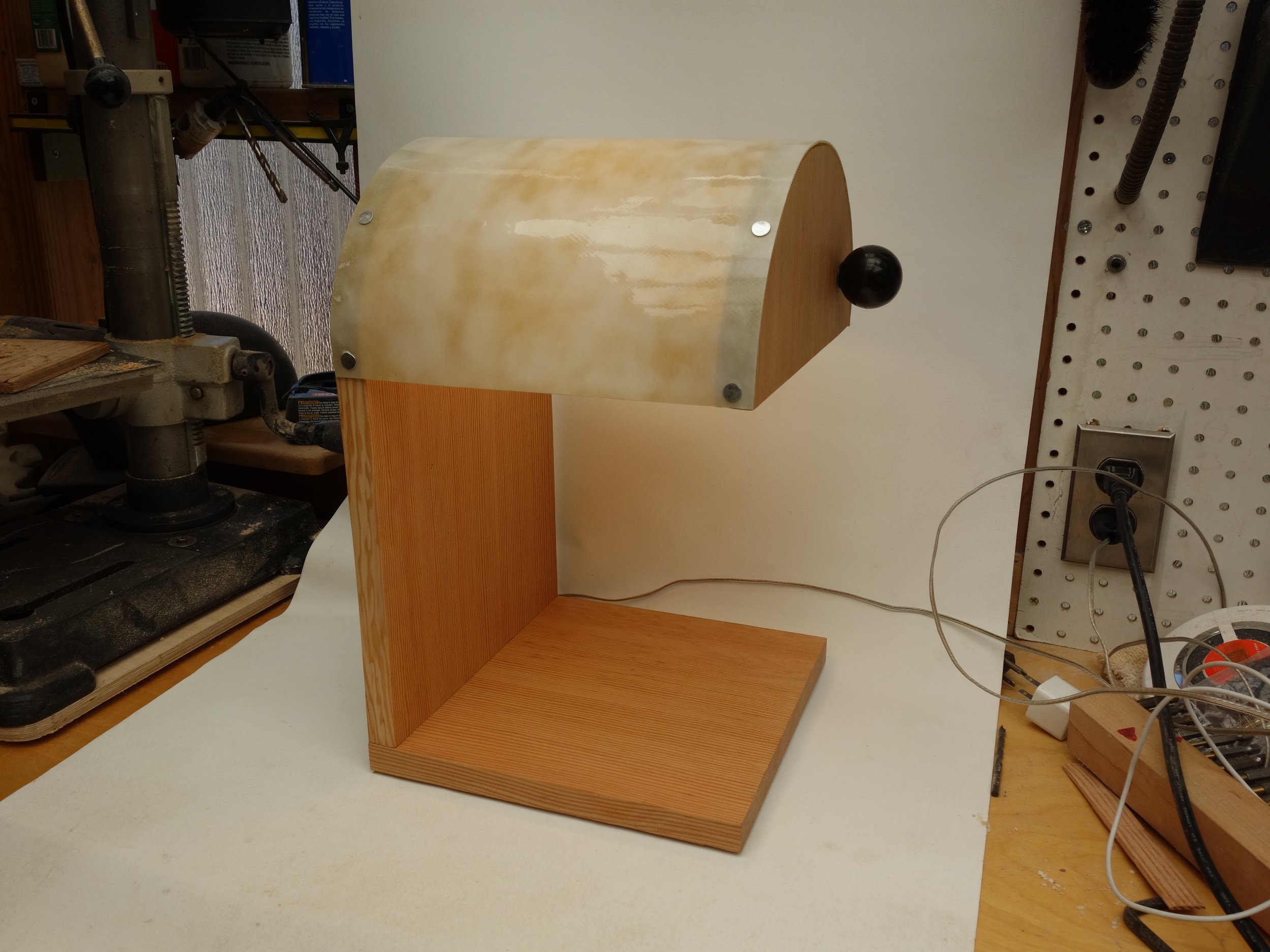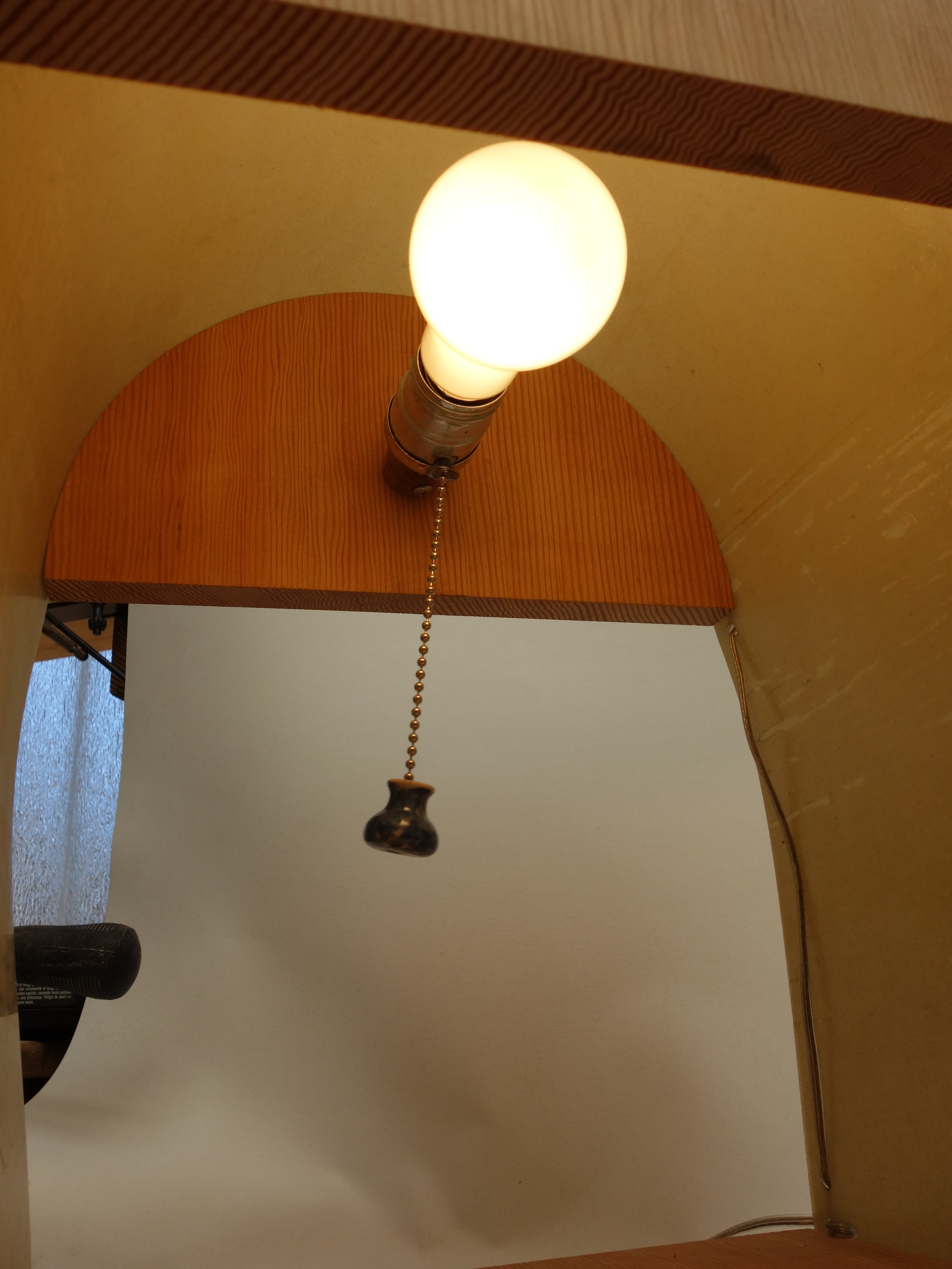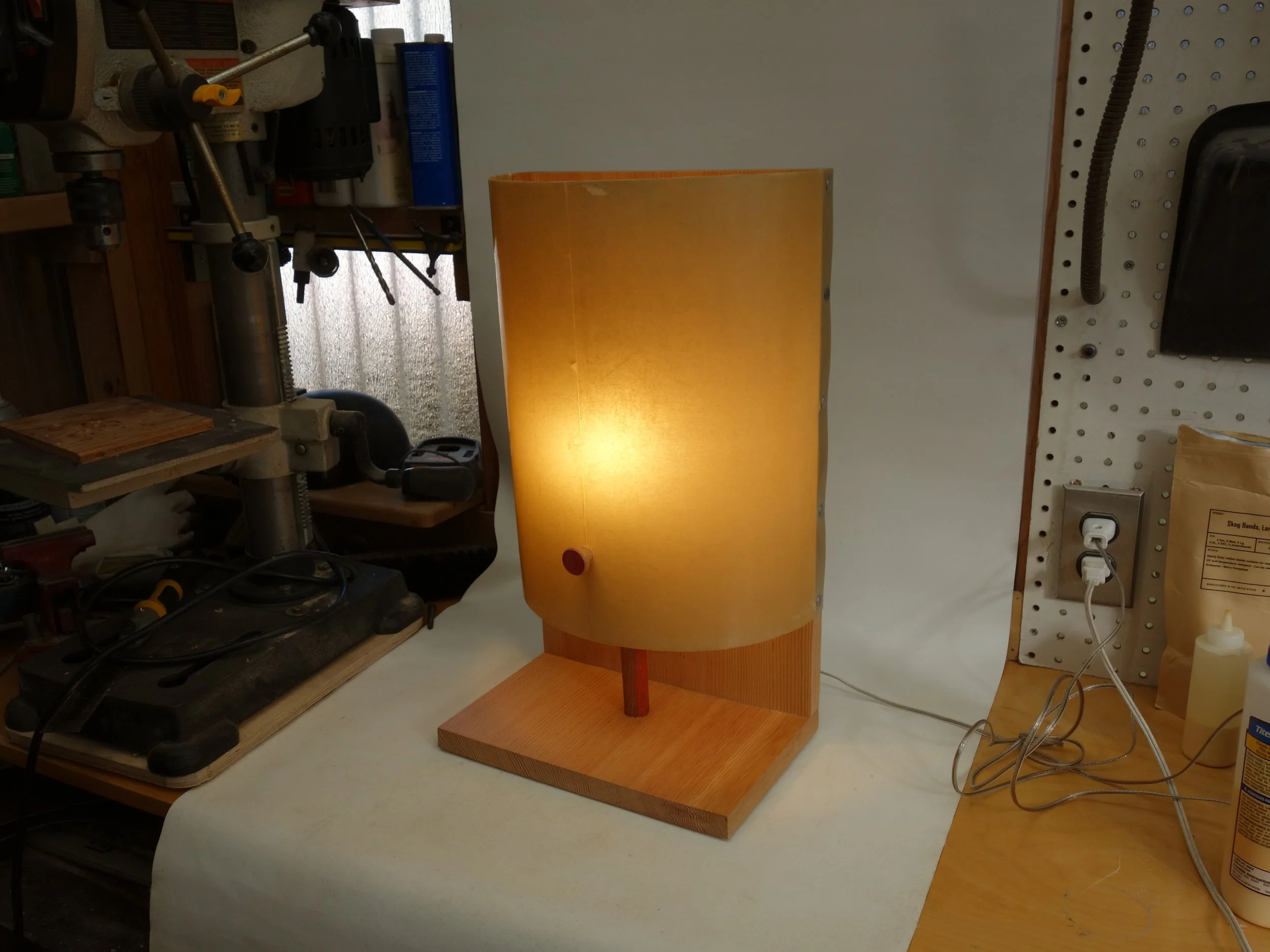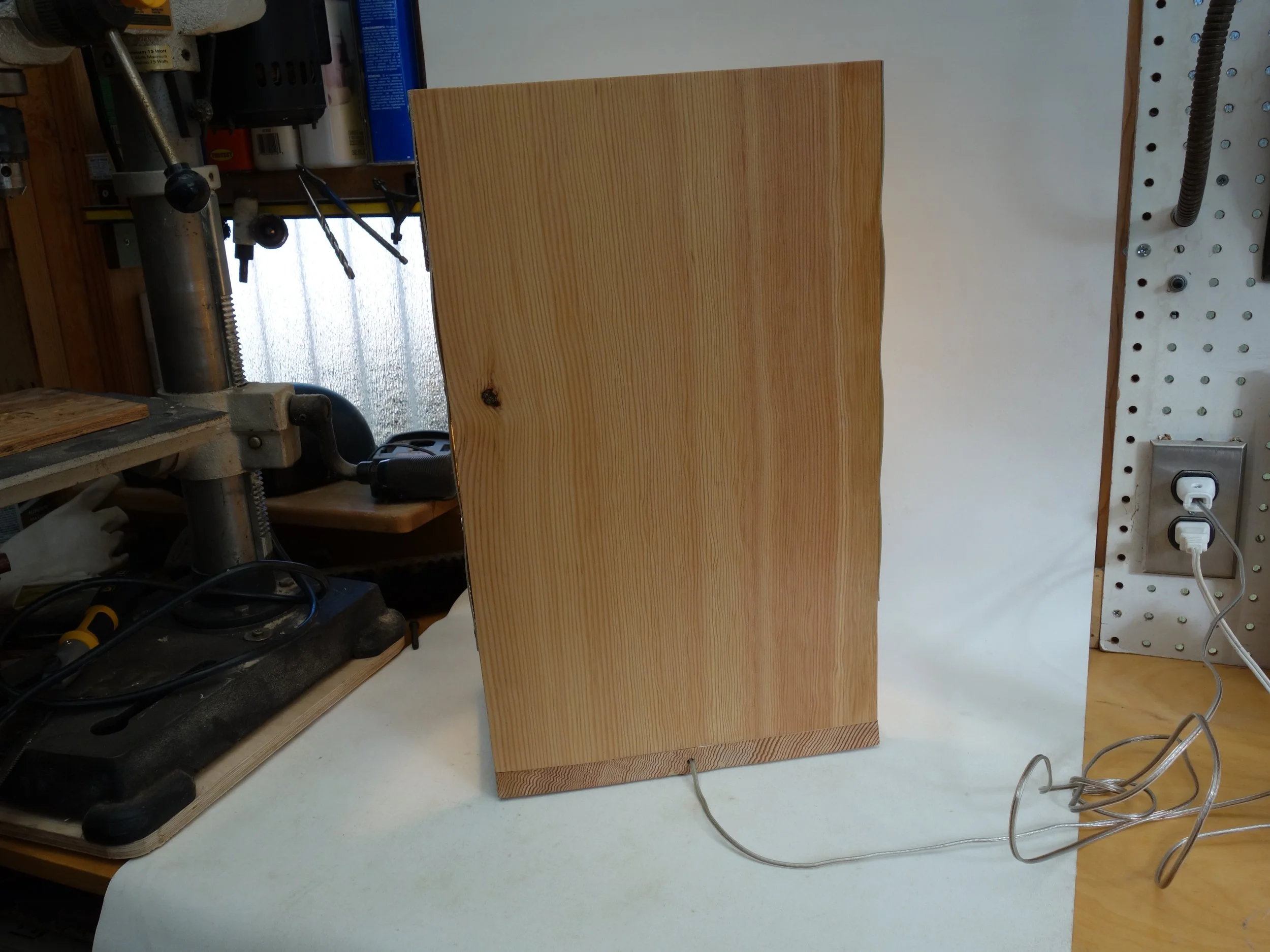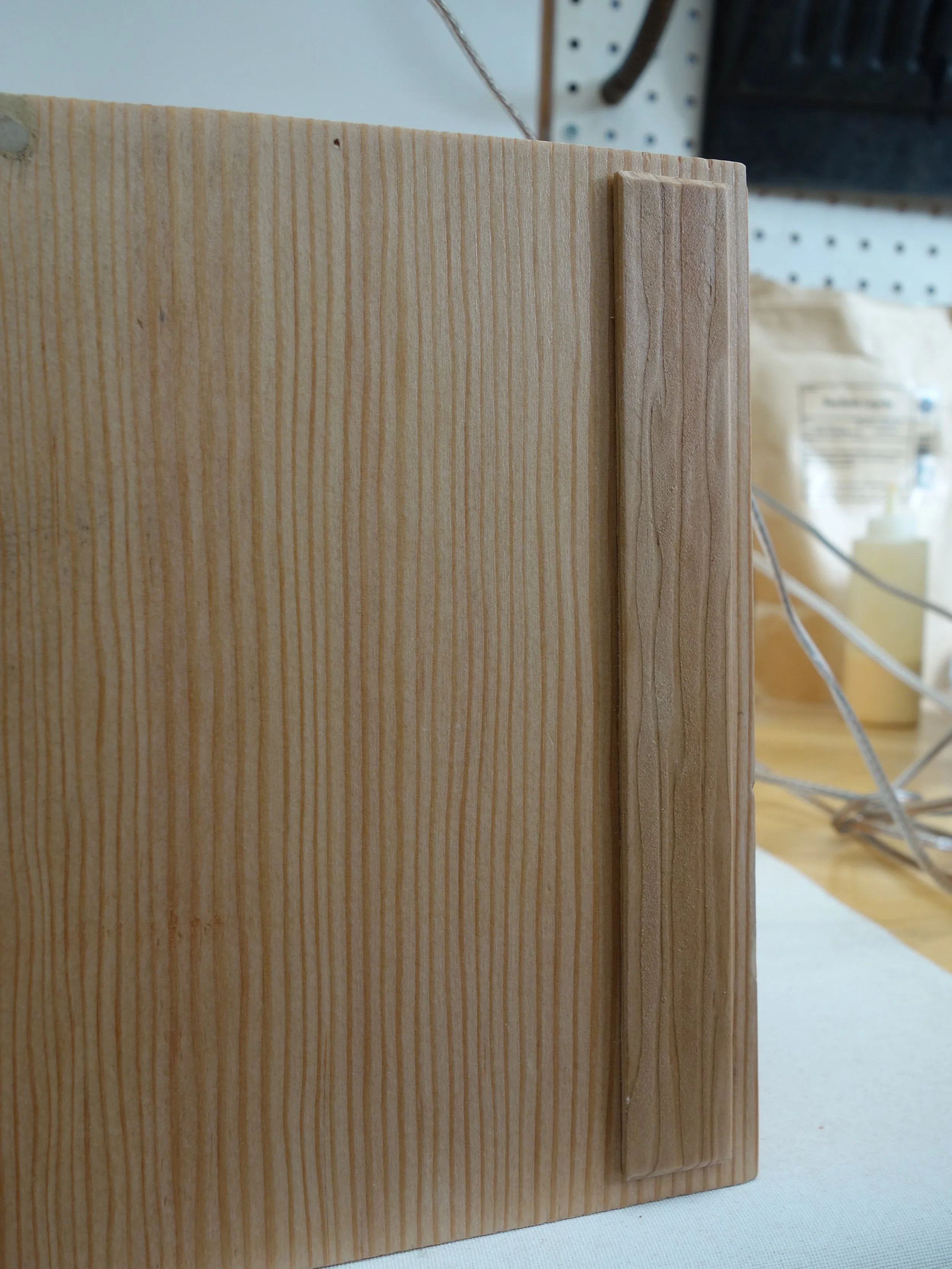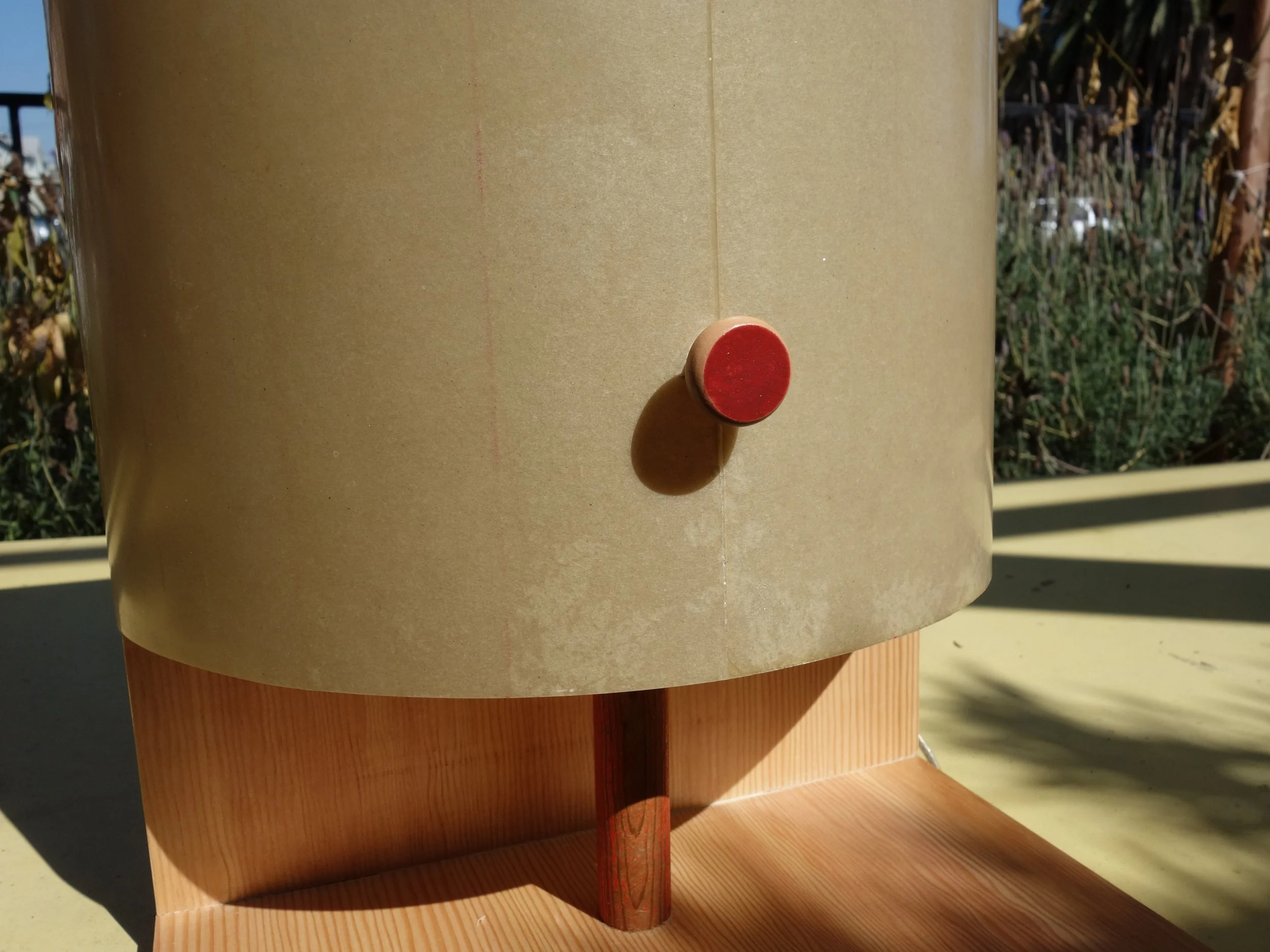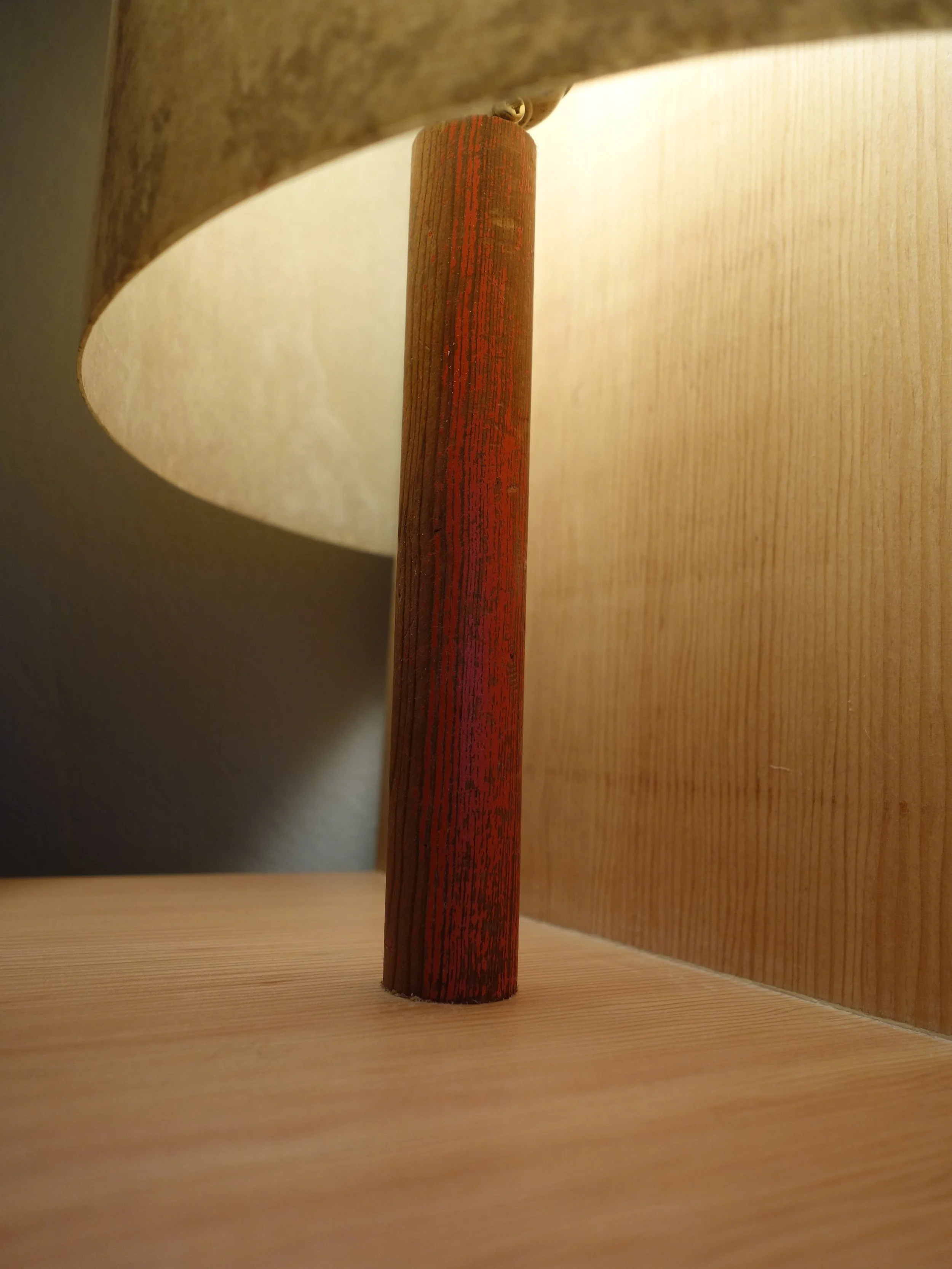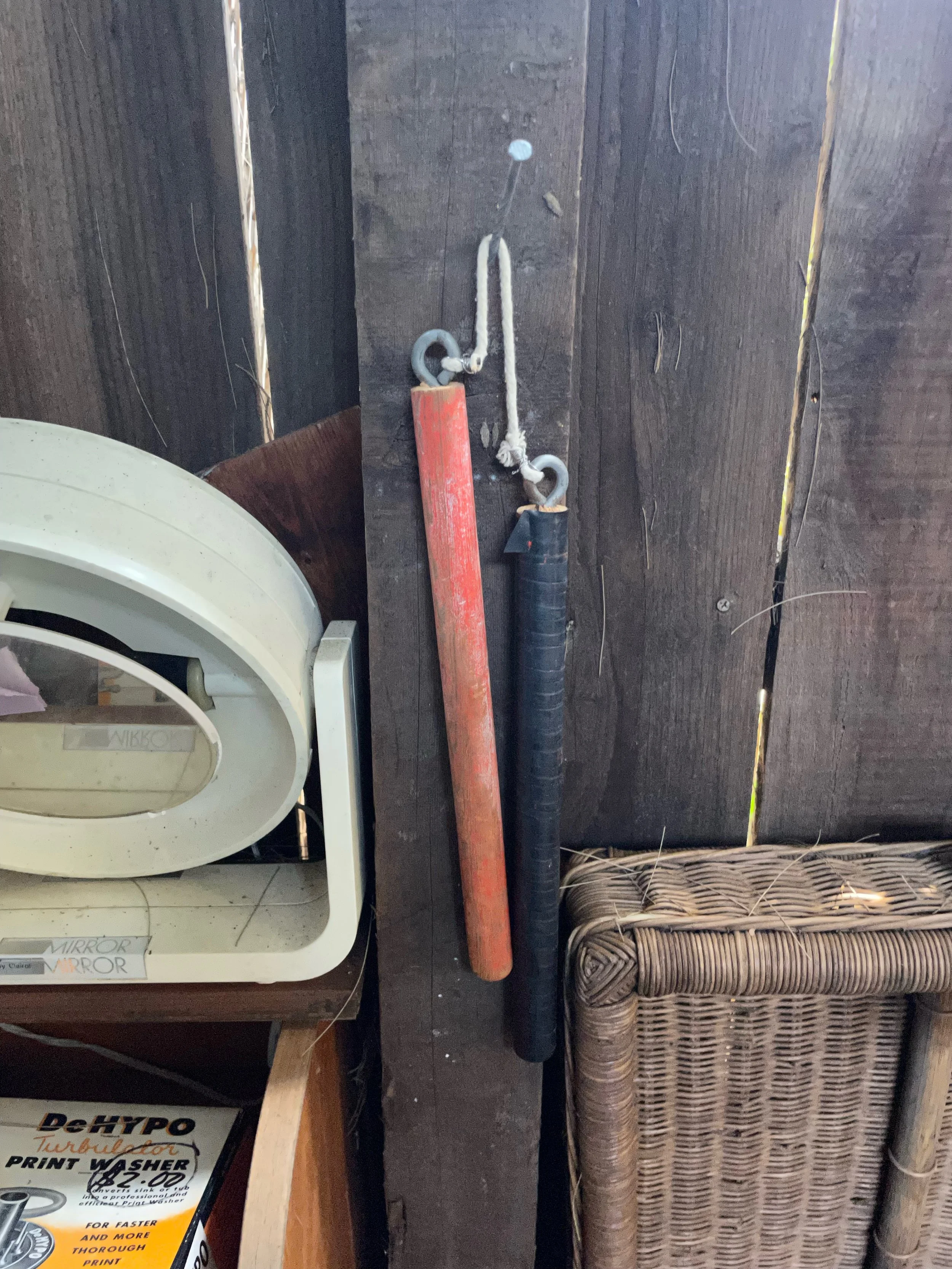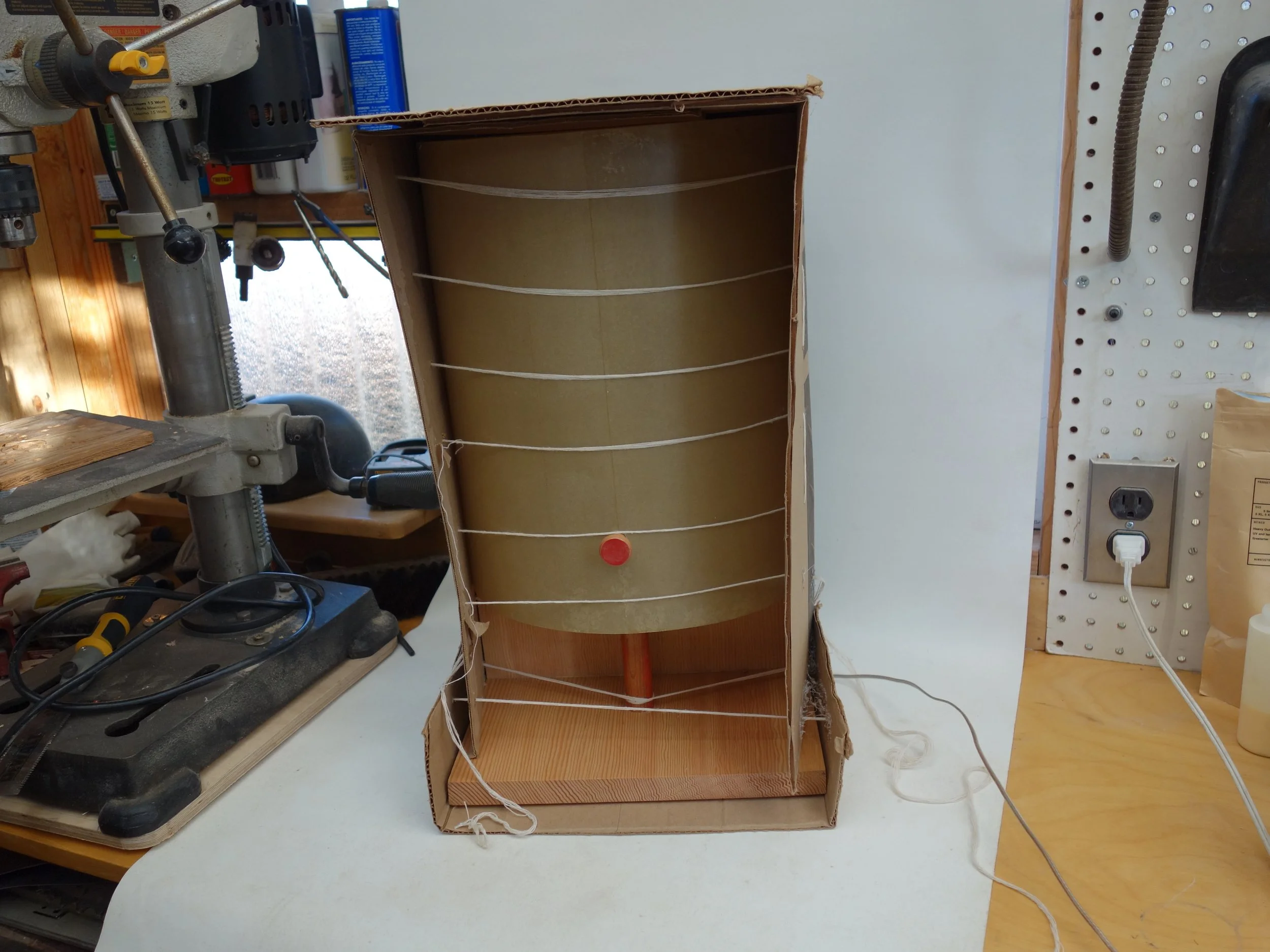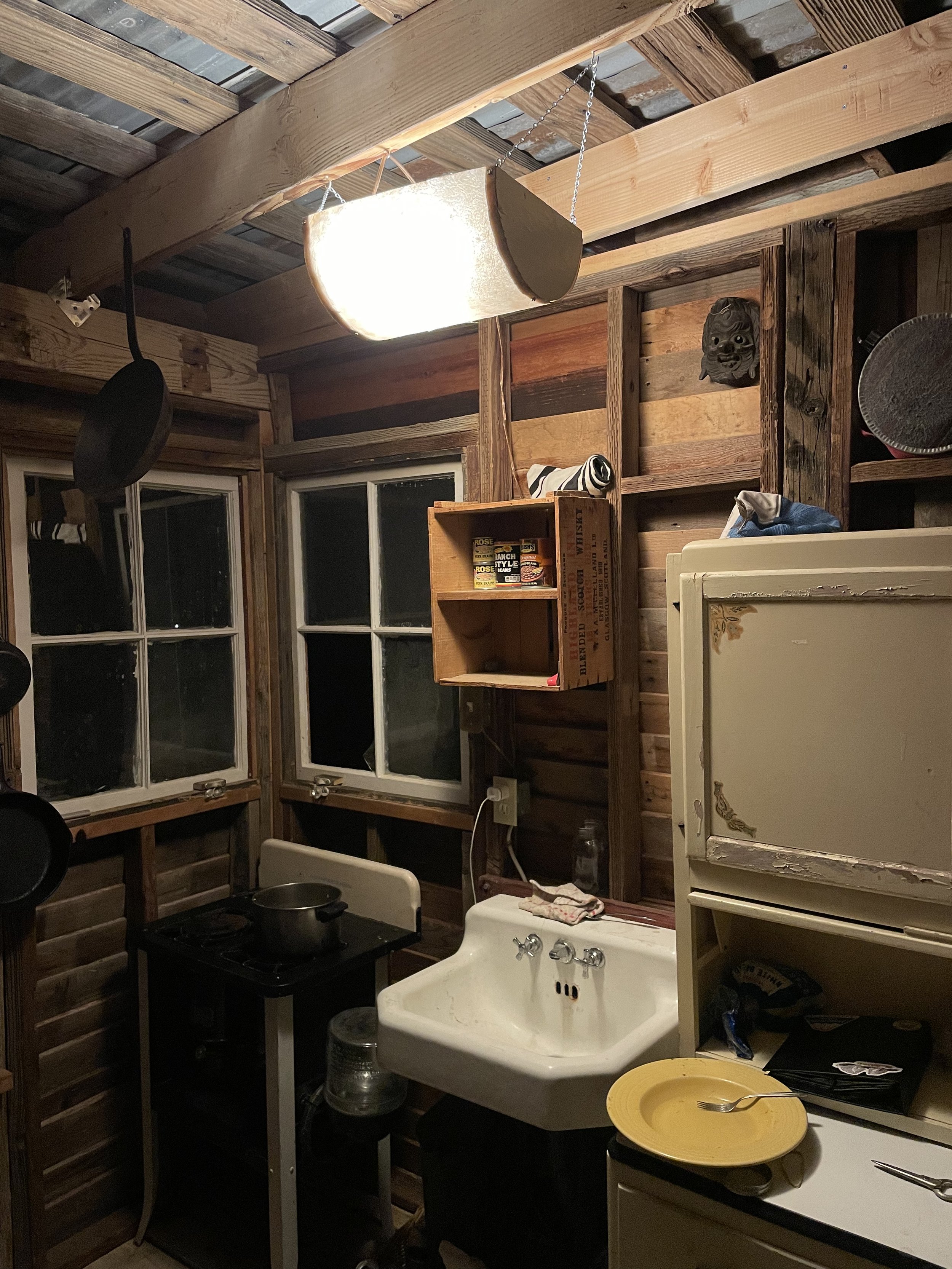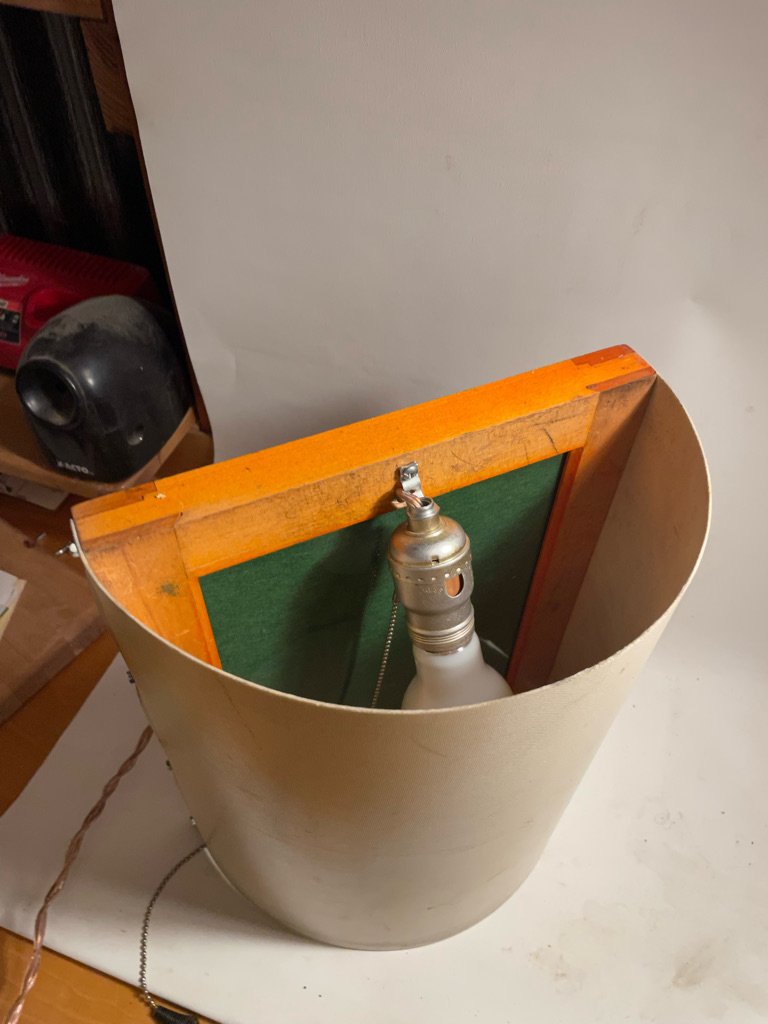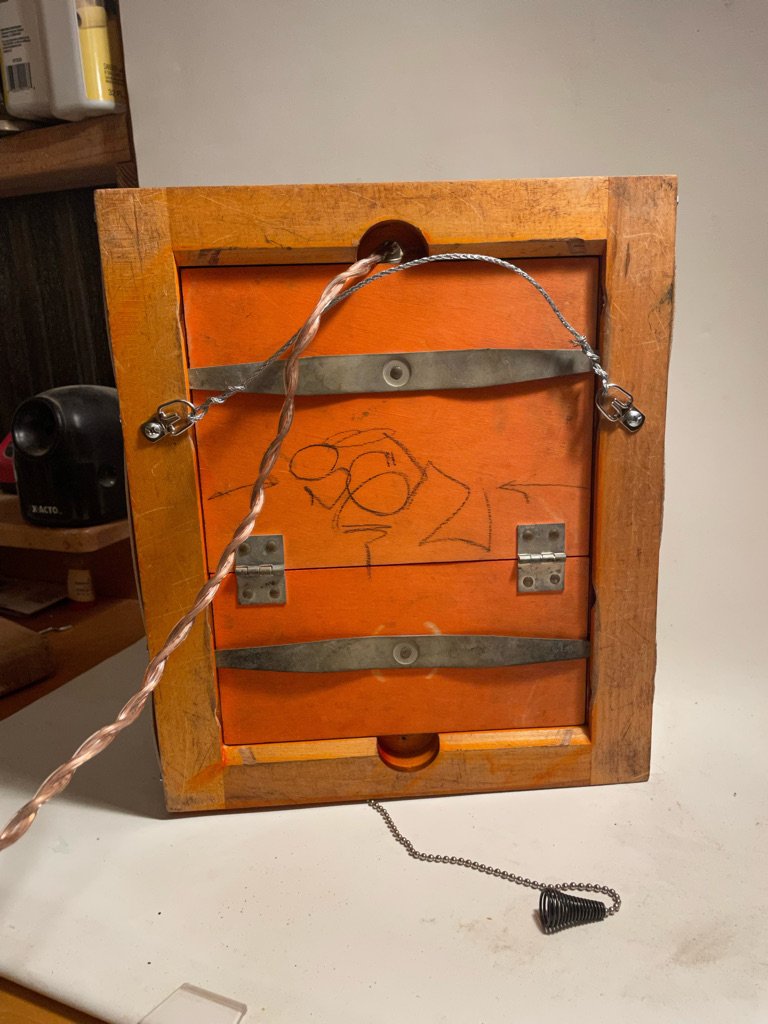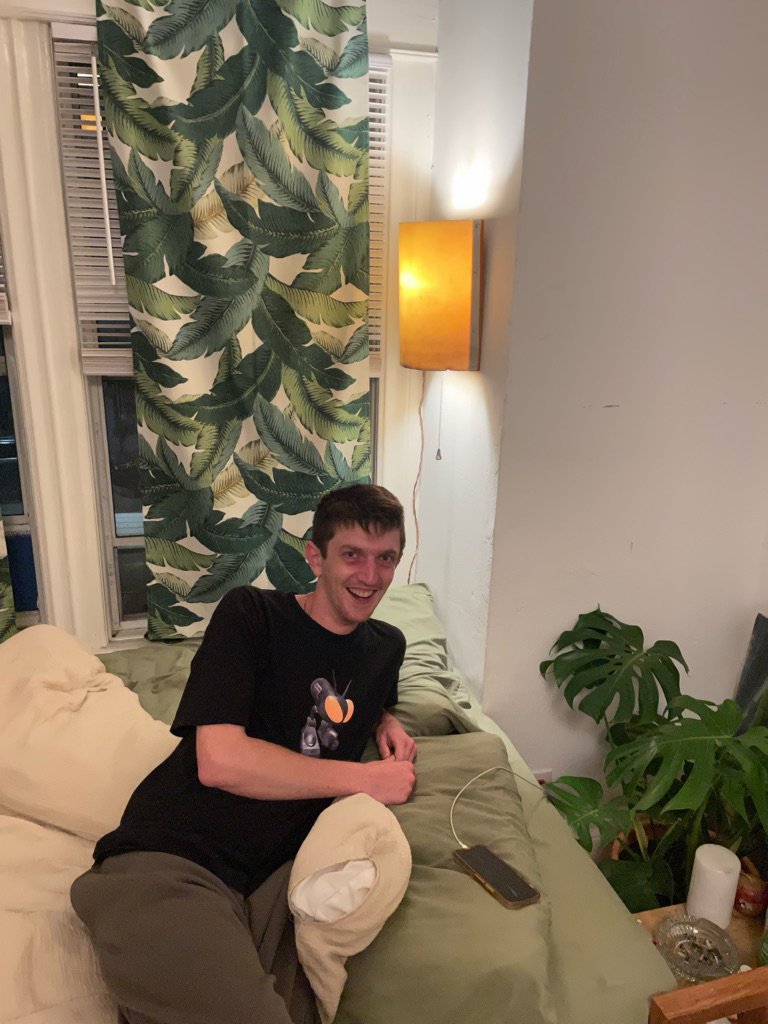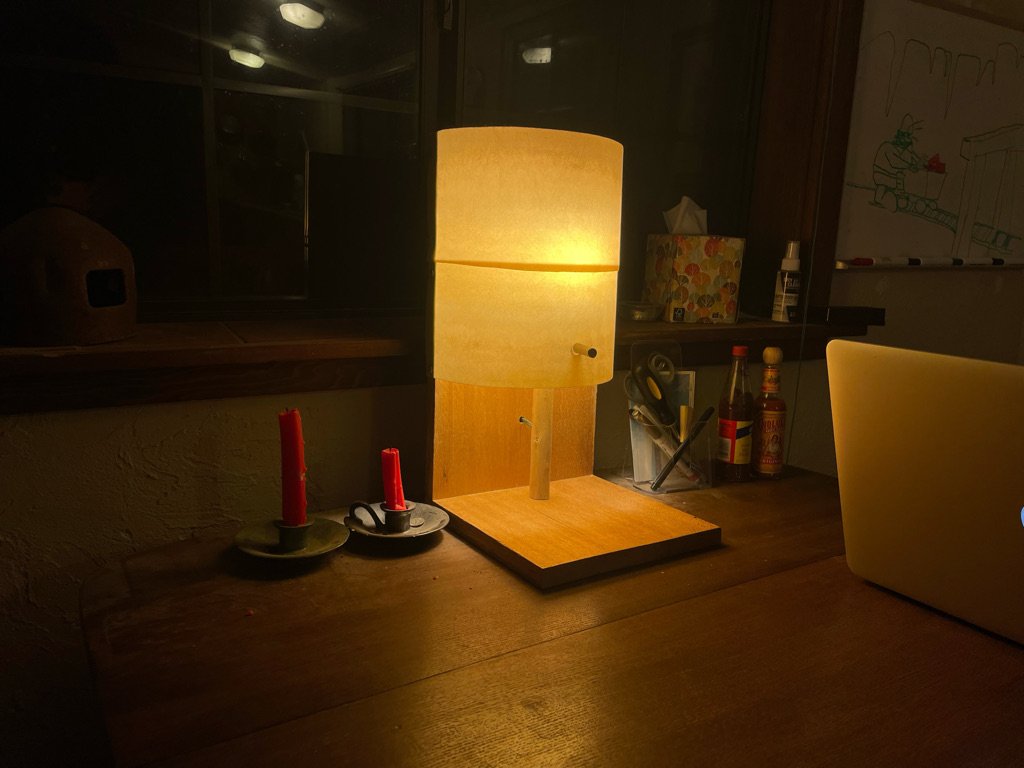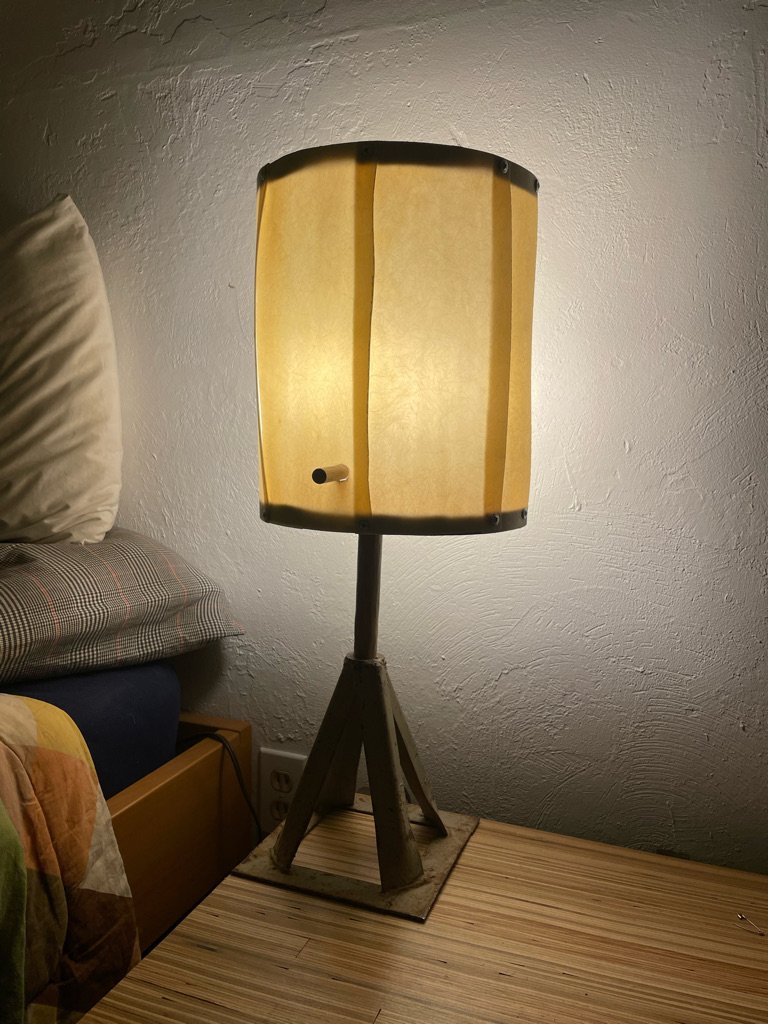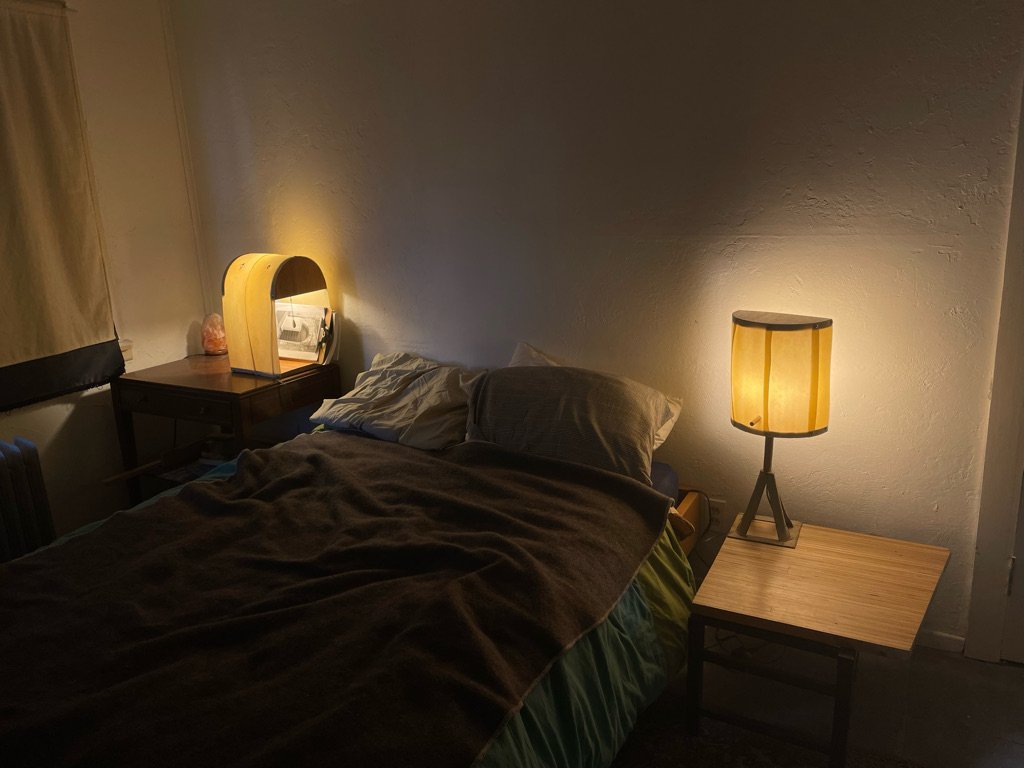In between making this lamp and the one before it, I ran out of my stock of old aviation fiberglass which I found in an alley in 2021. I tried searching for similar flat sheets of fiberglass and didn’t find anything that looked as good. And so I resolved to making the fiberglass myself.
I tried making my own fiberglass before with polyester resin and hated using the toxic stuff. It gave me headaches even when I was using it outside with a respirator on. And I could never get the mixing ratios right. I tried using West Systems epoxy-based resin instead and found it much easier to work with and a lot less toxic to be around. It took many attempts to produce a fiberglass sheet that I was pleased with. I ended up using a layer of newsprint paper to give the fiberglass more light diffusion and a good warm color.

















